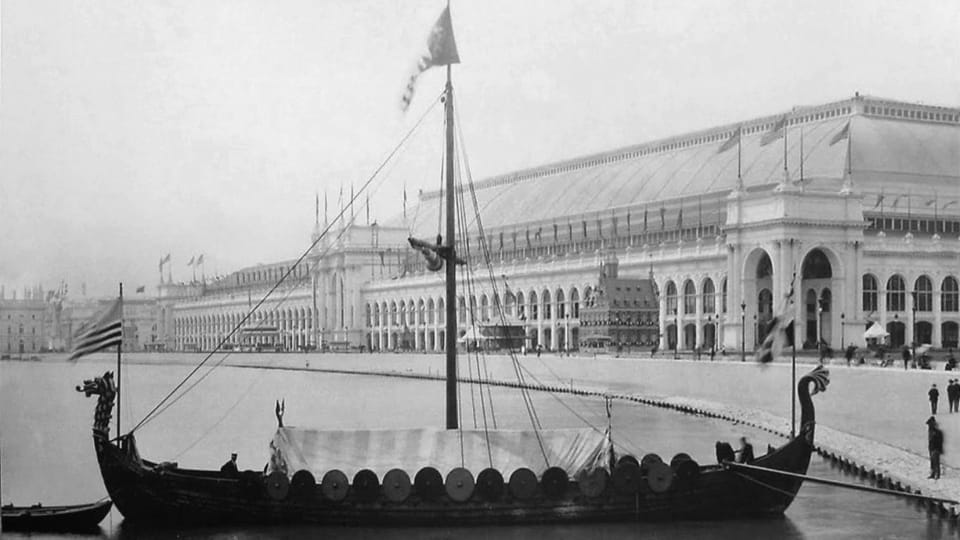Viking Longships: The Swiss Army Knives of the Sea That Built an Empire

Viking longships aren’t just boats, they’re the medieval equivalent of a Swiss Army knife, forged in oak and baptized by saltwater. These beauties were the cutting edge of naval engineering in the Viking Age (793–1066 CE), packing innovation, grit, and an adventurous swagger into every plank. And they weren’t just tools—they were statements. Sleek, deadly, and versatile, these ships weren’t just part of Viking history; they were Viking history, blazing trails across Europe and beyond.
These weren’t your grandpa’s fishing boats. Longships were designed to do it all—raid, trade, explore. With shallow drafts, symmetrical hulls, and featherweight frames, they could slip up a river like a thief in the night, or slice through the open ocean like a hot knife through butter. Vikings weren’t just building ships; they were crafting passports to adventure, platforms for conquest, and lifelines for trade. From the Mediterranean to the North Atlantic, longships were how the Vikings got their stamp on the map.
Now, you’ve got your two main players: the Drakkar and the Knarr. The Drakkar was the showstopper—a dragon-headed war machine that screamed, “We’re not here to chat.” Fast, agile, and designed to terrify, these ships were for when you wanted to roll up to a coastal village and make a statement. Then there’s the Knarr, the workhorse of the Viking fleet—sturdier, broader, and built to haul the loot back home. Think of it as the Viking cargo van but way cooler.
The genius started with the materials. Vikings loved oak—tough, flexible, and strong enough to handle whatever the sea threw at it. Pine, birch, and ash chipped in too, showing up in masts and oars. Iron rivets held it all together, and tar—good old pinewood tar—kept the water out. Simple tools like axes and adzes turned raw logs into sleek masterpieces. Axes were the MVPs here, doubling as lumberjack gear and precision carving tools. Efficiency, thy name is Viking.
Building these ships? It wasn’t slapdash carpentry, it was art. The keel was the backbone, the stem and stern posts the frame, and then came the clinker-built hull: overlapping planks nailed together to form a flexible, watertight shell. This wasn’t just craftsmanship—it was alchemy, turning wood into a wave-riding marvel. Every seam was sealed with moss or animal hair soaked in tar, making sure these bad boys could handle the North Sea’s worst temper tantrums.
And the design? Chef’s kiss. Shallow drafts let these ships operate in just a meter of water, which meant no hiding place was safe from Viking raids. The symmetrical shape, identical bow and stern, was a stroke of genius. Need to change direction? No problem. These ships could reverse course without missing a beat, leaving enemies eating their wake.
When it came to power, Vikings didn’t mess around. They had sails and oars, because why pick one when you can have both? The square woolen sail, waterproofed with animal fat, caught the wind and turned these ships into speed demons. No wind? No problem. Rowers with oars were the human engines, working in perfect sync. On a big Drakkar, up to 60 rowers could make these ships fly across the water like a missile. Discipline, teamwork, and a whole lot of muscle, that’s how the Vikings rolled.
And don’t even get me started on the swagger. These ships weren’t just functional, they were badass. Prows carved with dragons, serpents, and mythical beasts were more than just eye candy; they were meant to ward off spirits and strike fear into enemies. Rich chieftains turned their longships into floating works of art, flexing their wealth and power.
Longships were more than just war machines or trading vessels. They were part of the Viking DNA. Building and sailing them required knowledge, skill, and teamwork—qualities that defined Viking society itself. These ships didn’t just take Vikings places; they brought Viking culture to the world.
Historically, the impact is undeniable. Longships carried Vikings to North America, raided monasteries in Britain, and traded goods as far as Constantinople. These vessels were the connective tissue of a sprawling, ambitious network of exploration and conquest. Trade routes sprang up, cultures collided, and the medieval world got a whole lot smaller—all thanks to Viking ingenuity.
Case in point: the Gokstad ship. Unearthed in Norway, this beauty is the poster child for Viking naval prowess. Dating back to around 900 CE, it’s a near-perfect time capsule of Viking craftsmanship. Every plank, every rivet tells a story of how the Vikings mastered the art of shipbuilding and dominated the waves.
Today, the legacy of Viking longships sails on. They’re icons, popping up in movies, TV, and reenactments as symbols of adventure and resilience. Replicas like the Sea Stallion of Glendalough prove these ancient designs still hold up, inspiring awe wherever they go.
Bottom line? Viking longships weren’t just ships, they were a revolution on water. They turned a band of Scandinavian farmers and raiders into globe-trotting legends. With their clever design, unmatched versatility, and cultural significance, these vessels remain some of the most impressive feats of human innovation. Vikings didn’t just build boats; they built history.
